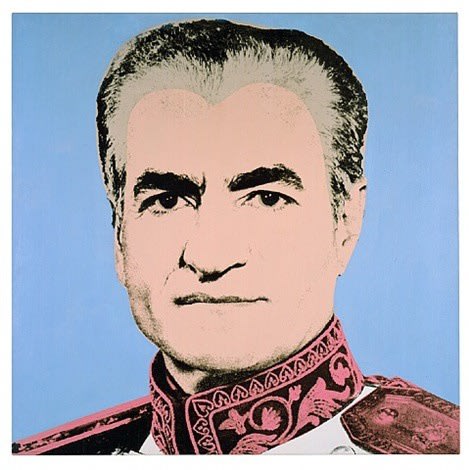
Tucked beneath the gardens of Tehran lies one of the most extraordinary and least seen collections of Western contemporary art in the world. The Tehran Museum of Contemporary Art, built in 1977 during the final years of the Shah’s reign, houses a collection estimated to be worth billions, including major works by Andy Warhol, Roy Lichtenstein, Robert Rauschenberg, and David Hockney. For decades, many of these pieces have remained in storage, sealed off behind geopolitical tensions and cultural shifts.
At the heart of the collection is a remarkable group of Pop Art works, acquired during a short but ambitious chapter in Iran’s cultural history. This was a time when the country looked outward, eager to assert itself as a modern and cosmopolitan nation. Under the leadership of Queen Farah Pahlavi, Iran assembled a museum collection with the kind of vision and velocity that’s nearly impossible to replicate today. Warhol’s Mao and Marilyn, Lichtenstein’s comic-infused canvases, and Rauschenberg’s tactile collages arrived in Tehran as part of a carefully considered narrative about modern life, image culture, and artistic relevance.
These works landed in Iran just before the doors shut. When the 1979 Islamic Revolution took place, many of the museum’s Western artworks were deemed politically or morally inappropriate for public display. TMoCA itself remained, but much of its prized pieces were moved into underground storage. The Pop Art pieces, colorful, bold, and steeped in American symbolism, were among those kept hidden, more often spoken about than seen.
What followed was decades of silence. Whispers about the museum’s vault circulated in the art world, growing into legend. Could Iran really hold one of the most important collections of postwar art outside Europe and the U.S.? And if so, what condition were the works in? Those who saw them privately reported pristine canvases, vibrant, untouched, and well preserved through isolation.
In recent years, the museum’s long silence has started to slowly lift, with select exhibitions offering rare access to its treasures. A landmark retrospective in 2015 reintroduced works by Warhol, Rauschenberg, and Hockney to Iranian audiences, and in 2025, a highly anticipated Picasso exhibition further opened the doors to Western modernism.
The Pop Art holdings at TMoCA are a living archive of a country at a crossroads, caught between tradition and modernity, East and West, openness and isolation. Today, their presence feels like a quiet provocation: a reminder of a more expansive vision, still waiting underground for a moment of cultural reckoning.
